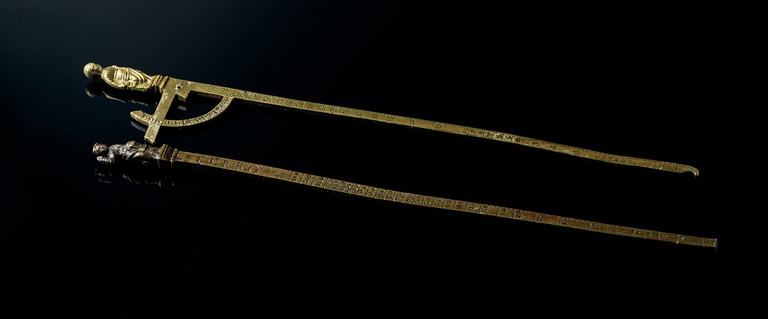Saint Barbara Artefacts
‘Santa Barbara la deni u lanqas hsara’
This Maltese utterance invokes Saint Barbara to ward off danger from thunderstorms. The relationship between Santa Barbara and thunder is rooted in her martyrdom. Santa Barbara lived during the turbulent times of the early years of Christianity. Her father, who was overly protective of her, sealed her in a tower, hence why she is often depicted next to a stone fortification. His protectiveness did not deter Barbara from becoming a Christian. Her own father denounced the faith but nonetheless Barbara did not renounce it and was publicly tortured, remaining steadfast in her belief. Upon seeing this, her father decided to execute her himself. As he was about to raise an axe to his own daughter, a thunderbolt killed him instantly. Thus, Saint Barbara became associated with thunder. The sound of thunder reminds us of the sound of cannon shot, making it was inevitable that Saint Barbara would be chosen as the patron saint of gunners.
The Cult of Santa Barbara in Malta was always associated with gunners. In a will of 1471, the captain of the Citadel of Gozo mentions a chapel of Saint Barbara, giving the veneration of this saint a very long history. With the advent of the Order of St. John, the saint’s cult increased in importance amongst the gunners employed by the Order. A confraternity with Saint Barbara as the patron saint was established in 1555 in the Church of the Annunciation in Birgu, the rector being the commander of artillery. With the establishment of Valletta, the confraternity moved their seat to the new city, building a new chapel on today’s Republic Street on a site donated by Grand Master Verdala in 1585. The chapel was rebuilt in 1736, and remains to this day the property of said confraternity and is still proudly standing as one takes their very first steps down Republic Street.
On display at the Maritime Museum, visitors may notice four artifacts that refer to the cult of Saint Barbara. On display, one finds a cannon that was probably cast in Malta between 1607-1620 by the Flemish founder Bastaiano Vos, and on the cannon one can note an effigy of St. Barbara, surmounted by the arms of the Order and Grand Master Alof de Wignacourt. The bronze cannon is a unique bronze sculpture of early founding in Malta and is 2.61m long and has a calibre bore of 6.6cm
On display close to the cannon, one finds a painting of St. Barbara. This oil on canvas painting was probably painted during the late 17th century, and it shows a commander of artillery kneeling, beseeching St. Barbara. Close to the kneeling commander, one can see various artillery pieces that were used both on land and at sea, along with various artillery tools depicted in the background close to the painted cannons. Forming part of the Malta Maritime Museum collection are also two gunner’s rulers, which are surmounted with the image of Santa Barbara, a reminder of the widespread belief of the protection of this most ancient of saints.

